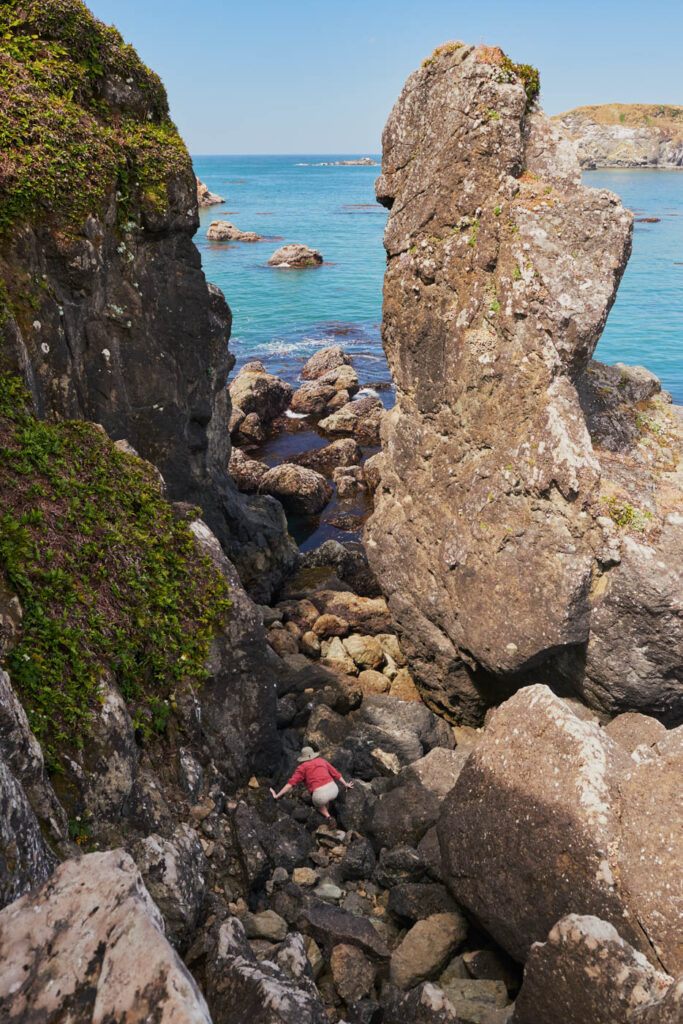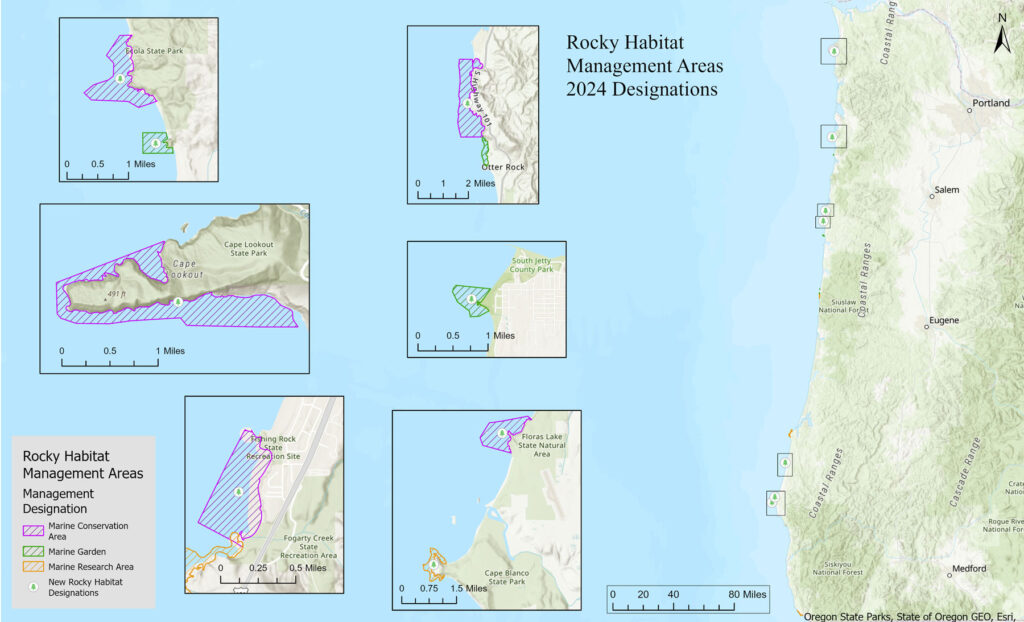Oregon’s iconic rocky habitats are both biologically and culturally important, making up 41% of the state’s 362 mile coastline. From iconic Haystack Rock on the north coast to the numerous majestic sea stacks and rock arches off Oregon’s beautiful south coast, these rocky habitats support a wealth of marine life and they attract millions of visitors and recreationists each year.
Oregon’s rocky habitats provide critical nesting habitat to over one million nesting seabirds, support productive kelp beds, marine mammal haul-out sites, habitat for hundreds of fish species including important spawning areas for commercially important juvenile rockfish, and are home for thousands of invertebrate species including sea stars, anemones, and shellfish.

These epicenters of rich marine biodiversity are increasingly vulnerable to escalating disturbances from people, marine heat waves, and other impacts.

From 2017-2022, the Department of Land Conservation and Development (DLCD) led a process to update the Rocky Habitat Management Strategy, which is the guidance document for managing Oregon’s rocky habitats from upland rocky habitat, to the intertidal zone to subtidal rocky habitats. DLCD, with assistance from a Rocky Habitat Working Group, other relevant agencies, and public input, completed the updated Rocky Habitat Management Strategy in 2022. The updated plan includes improved policies that strengthen resource protections. It also includes a new process for the public, agencies, tribes, and other institutions to submit proposals to designate new sites, or amend / delete existing sites.
Eight new nominated sites were officially designated in 2023. These sites include five Marine Conservation Areas (Ecola Point, Cape Lookout, Fogarty Creek, Cape Foulweather, and Blacklock Point), two Marine Gardens (Coquille Point, Chapman Point), and one Marine Research Area (Cape Blanco).


